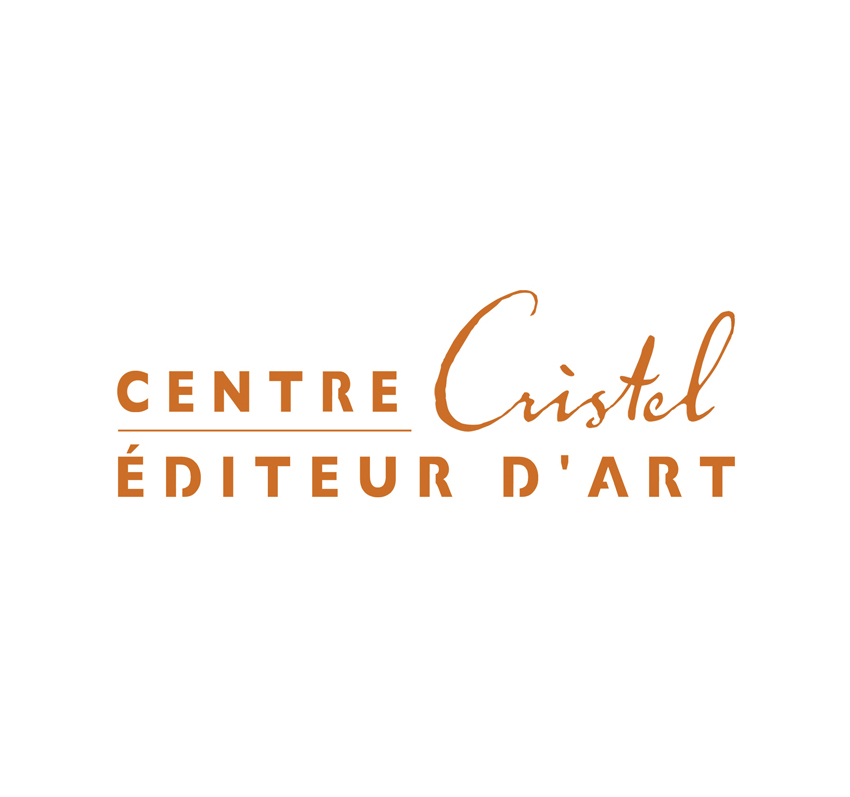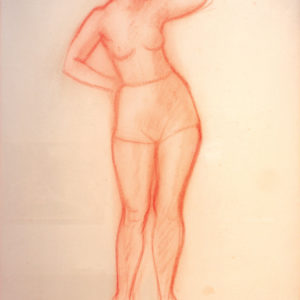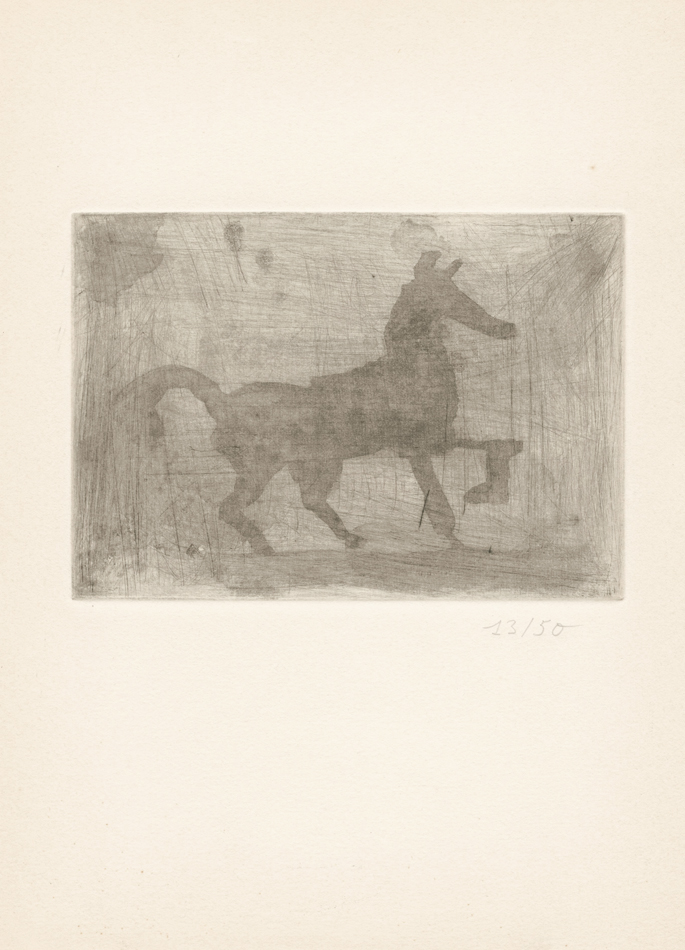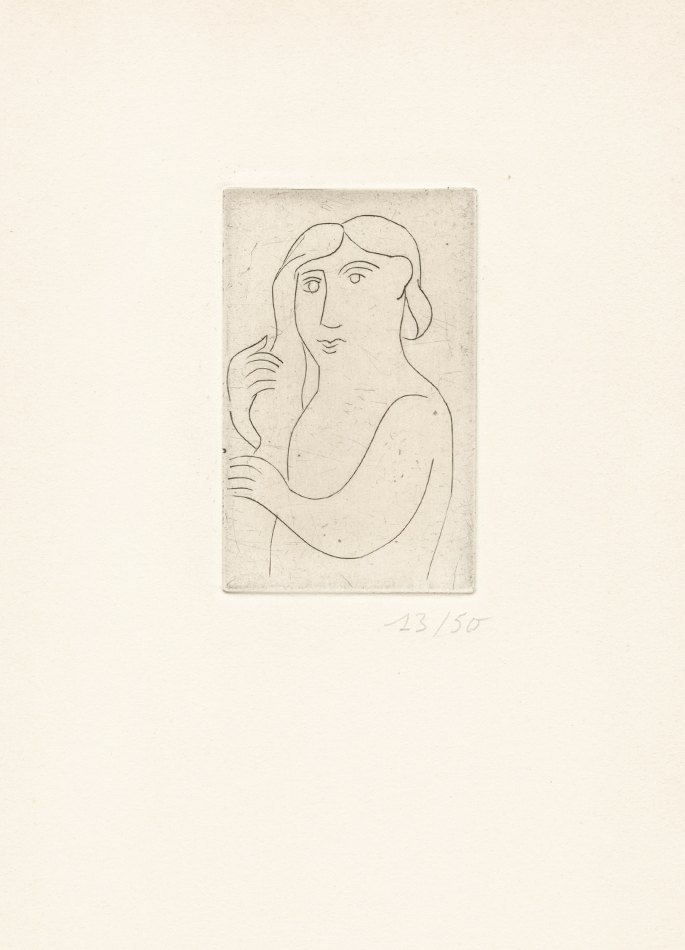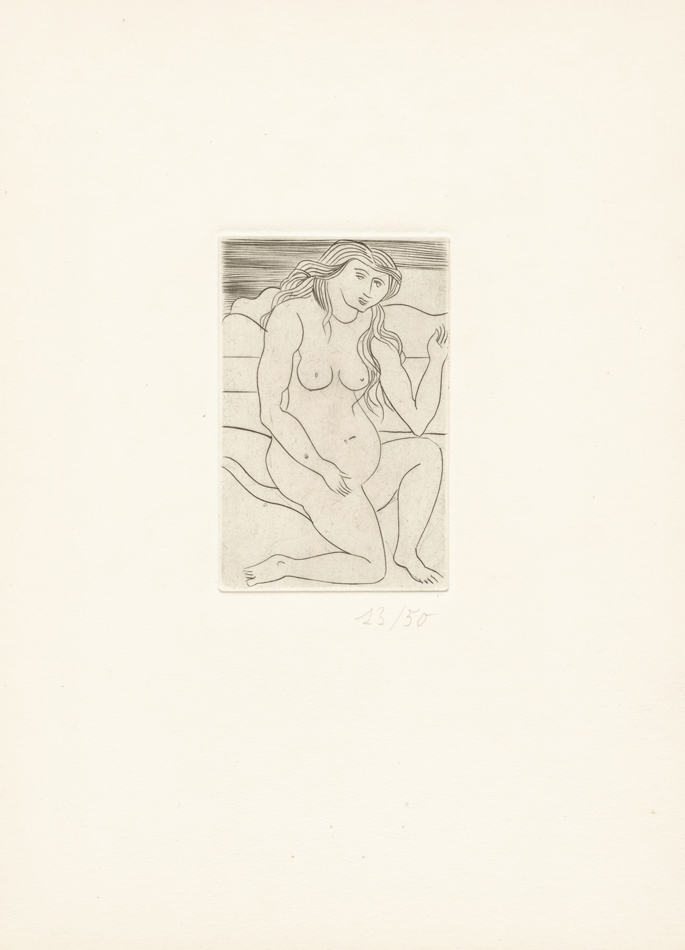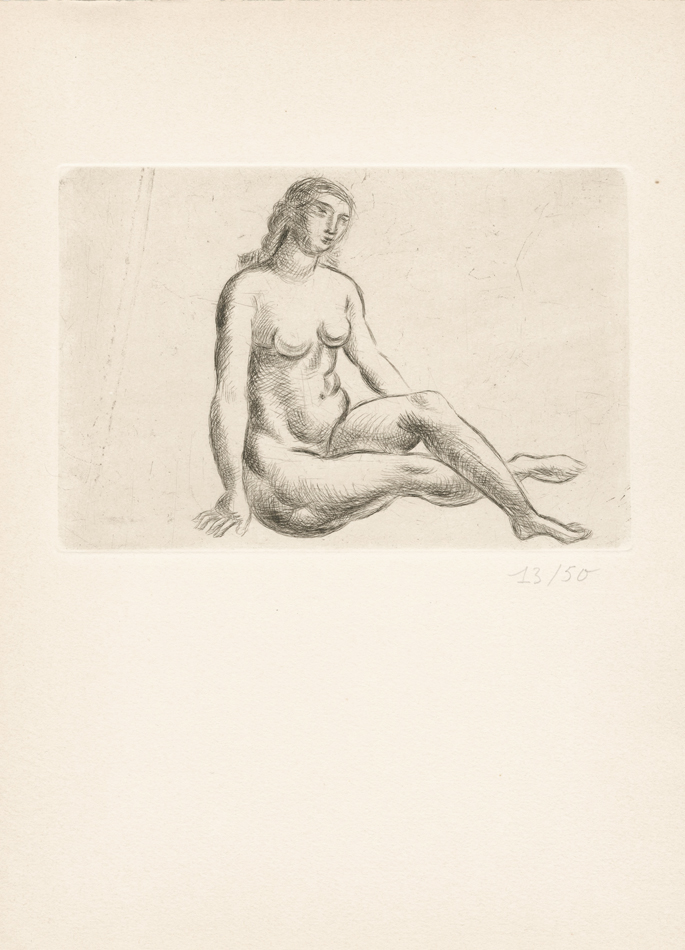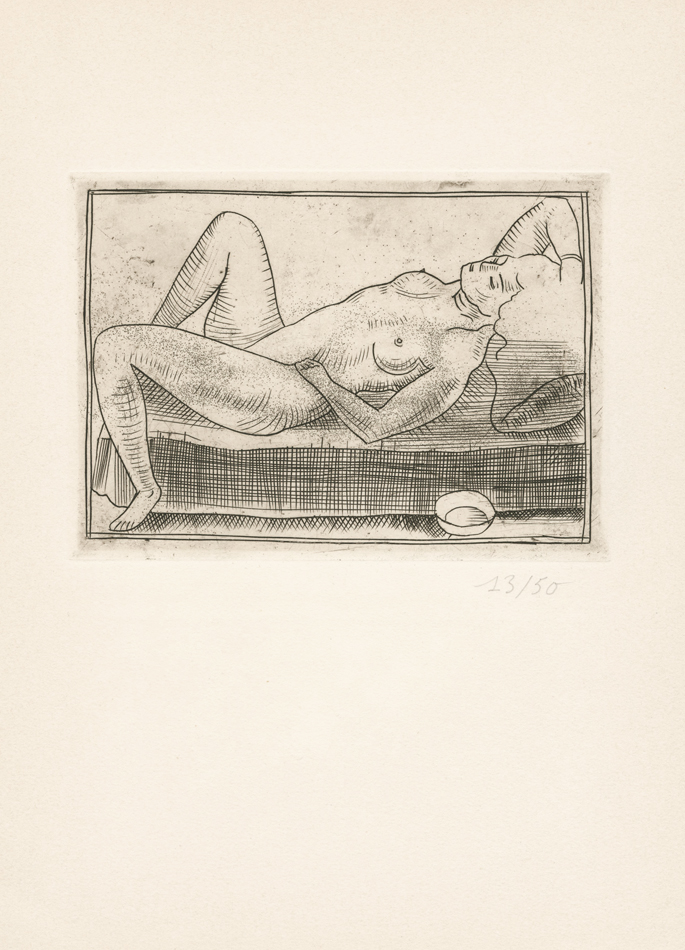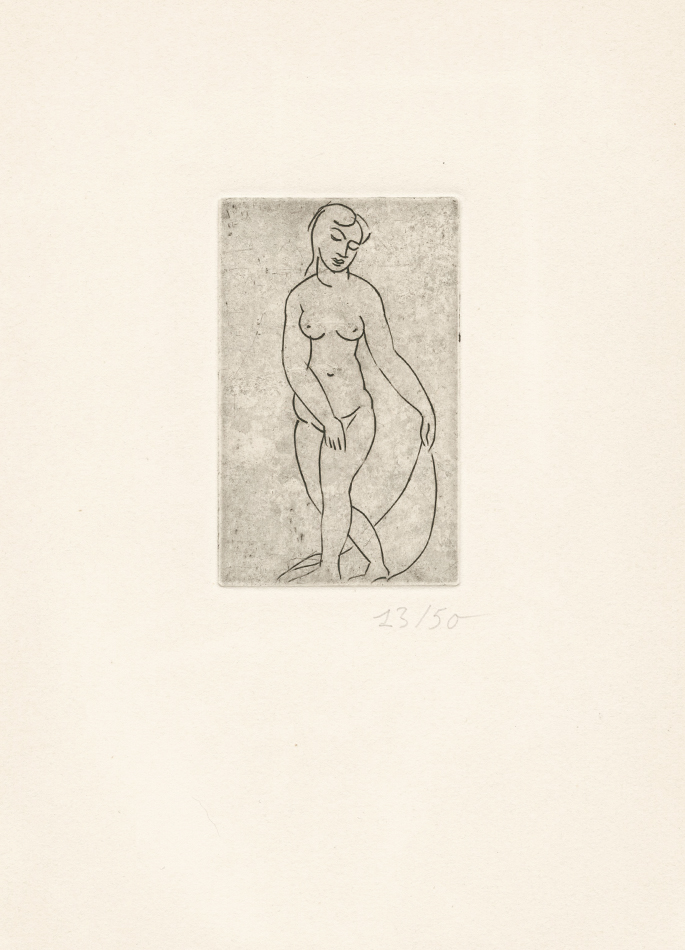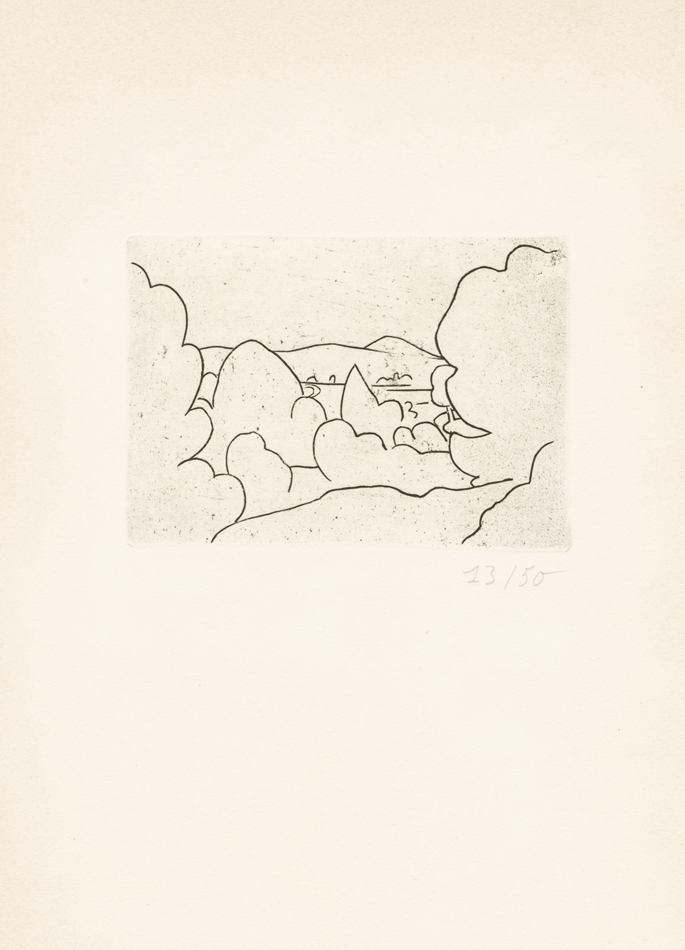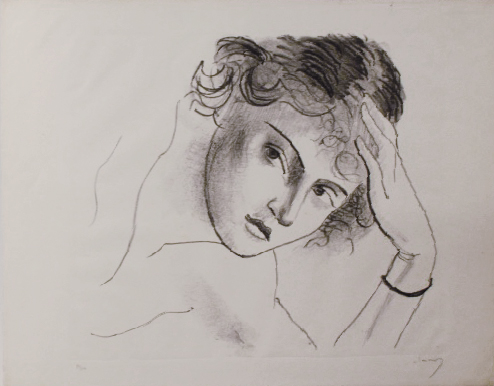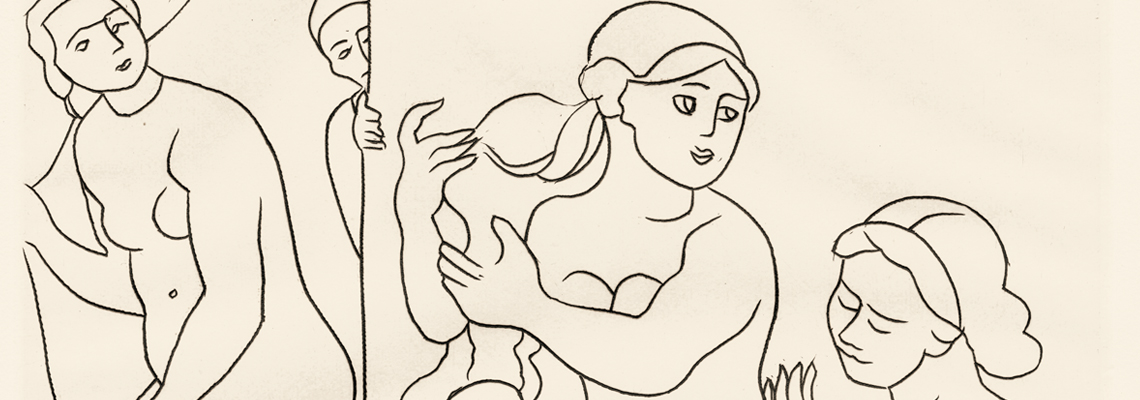
André Derain. Engraver exhibition
From 2 December 2017 to 3 March 2018
Inimitable Derain… major artist recognized as such by the market – one of his paintings Trees in Collioure was sold for 19.5 million euros at Sotheby’s – nonetheless, he disconcerted critics by often stating his passion for drawing and for the line. But isn’t this Derain, draughtsman and engraver, that Giacometti loved so much? “Derain’s art is now imprinted with this expressive greatness one might call ancient”, Apollinaire testified in 1916. It was sort of announcing the burin of the Satyricon and all of the feats of engraver Derain. The Cristel Editeur d’Art Center gathered the 36 engravings of the Satyricon as well as some rares etchings for this Engraver exhibition.
Exhibited works
André Derain
and his glory
We must remember, for those who have forgotten, what glory was that of André Derain at the beginning of the 20th century. Let’s state it quite clearly: a glory far superior to the reputation of Pablo Picasso, his friend and, in many things, his imitator, his pupil! A glory that would allow him to be admired, according to the formula of André Lhote, as “the greatest living French painter”. We remember that Guillaume Apollinaire was not to be outdone, hailing a style “imprinted with this expressive grandeur that one could call antique”. In a fit of humor, Modigliani, yet the least jealous of men, threw this ambiguous word in his face: “maker of masterpieces”! Because such seemed, indeed, the vocation of André Derain in the 1910s, the 1920s, the 1930s: to create again, always to create, and better than the others! Achieving miracles that we had never seen since Corot, his perpetual reference, and since Van Gogh, his absolute idol. In return for this, the man that everyone held to be the founder of fauvism, the first primitivist and one of the fathers of cubism followed his path, incomparable. “His power over artists is considerable and we expect to see him take the direction of world painting”, was to write about him Jean Leymarie, one of the eminent voices of modern art. Because we must repeat it: approaching his forties, André Derain, born in 1880, embodied the sovereign virtuoso, a brilliant painter, of course, but also a ceramist, sculptor, lithographer and engraver. On five continents, wealthy collectors and countless dealers knelt down to obtain permission to buy paintings from him! Sacred Derain! A tall colossus, happily exceeding one hundred and twenty kilos. God knows if he was imposing – and if he was imposing on the market, with method and contempt, his own idea of his own value…
It’s simple: in this month of December 2017, while Paris is devoting yet another retrospective to him through the Center Pompidou, and while the Cristel Éditeur d’Art Center, in Saint-Malo, invites you to rediscover his extraordinary hand as an engraver, in this month of December, sixty-three years after his death, André Derain continues to make headlines, sometimes for better, sometimes for worse. The best ? A mythical name, some of whose canvases reach heights at auction, and up to 19,508,193€ at Sotheby’s, in London, in 2010, for Trees in Collioure, a work from 1905! The worst ? A stinging misunderstanding between the master and the critics, who ended up condemning an unpredictable demiurge, capable of committing this unspeakable crime: the return to drawing, and therefore to the spirit of the classics… Wretched art critic, when she is too sold to fads, stupidity, sufficiency, approximation or ignorance… In the second part of his life, André Derain, locked up in his vast house in Chambourcy, and having become frankly a misanthrope, experienced long moments of bitterness , but without giving up any of its creative powers. So Jean-Michel Alberola was able to assure, with the healthy hindsight that time brings: “Derain claims to be both the last painter of the Western classical tradition and, at the same time, he never stops putting himself in a position where he paints subjects as if no paintings of nudes, bacchanalia or landscapes had been painted before him.” This was a perfect announcement of the thirty-six Satyricon burins that we are deeply pleased to bring together today, alongside rare etchings from a Swiss collection.
Christophe Penot
Art editor
